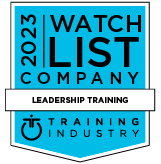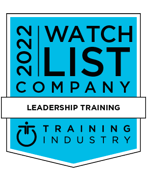A Comprehensive Guide to Employee Motivation Strategies for People-First Leaders

Employee motivation is one of today’s most pressing challenges. Amid the complexities of hybrid work, economic uncertainty, and mounting burnout, many employees feel disconnected and unmotivated. In fact, only 32% of U.S. employees are engaged at work (Gallup). This disengagement is more than a morale issue—it impacts productivity, retention, and overall company performance. Employee turnover alone costs U.S. businesses over $630 billion annually, much of it due to poor motivation (Work Institute).
To address this, leaders must fundamentally rethink how they approach motivation. Employees who feel seen, valued, and heard bring their best selves to work. Ignoring these core human needs risks losing talent, driving up recruitment costs, and undermining competitive advantage.
Motivating employees starts with four key leadership skills: Clarity, Autonomy, Relationships, and Equity (CARE). These principles not only drive motivation but foster a culture where every person feels truly seen, valued, and heard.
1. Provide Purpose with Clear Expectations
Clarity is the bedrock of motivation. When employees lack a clear understanding of their role and its impact, they feel disconnected and undervalued. According to Harvard Business Review, 72% of employees report improved performance when goals are clearly communicated.
Actionable Steps:
- Set Clear, Achievable Goals: Ensure leaders foster clarity at every level. Align individual objectives with broader company goals. Frameworks like OKRs (Objectives and Key Results) help connect day-to-day tasks to organizational success.
- Provide Consistent Feedback: Regular, meaningful feedback is essential. It not only boosts confidence but ensures employees feel heard. In the CARE framework, clarity isn’t just about what leaders say—it’s about ensuring employees understand and have a voice in giving feedback.
Supporting Research: Clarity is at the heart of the CARE Equation. When employees know what’s expected of them and how they contribute to larger goals, they feel seen and empowered. This sense of purpose is essential to long-term motivation.
2. Foster Ownership through Empowered Decision-Making
Autonomy is a powerful motivator. Micromanagement crushes morale, stifling creativity and drive. When employees are empowered to make decisions, they feel trusted and motivated to take ownership of their work. In fact, employees with greater autonomy are 31% more likely to be engaged (University of Birmingham).
Actionable Steps:
- Delegate Meaningfully: Give employees responsibilities that allow them to control how they approach their work. Tools like the Eisenhower Matrix can help leaders delegate while fostering autonomy.
- Encourage Problem-Solving: Create a culture where experimentation and learning from mistakes are encouraged. Leaders should focus on developing more leaders, not more followers.
Supporting Research: Autonomy is a core pillar of the CARE framework. By giving employees autonomy, leaders foster an environment where employees feel valued for their unique perspectives and abilities. This sense of ownership drives deeper motivation and commitment.
3. Invest in Genuine Relationships
Relationships are central to motivation. Employees are more engaged when they feel valued not just as workers, but as people. Research shows companies that prioritize strong leader-team relationships see 50% higher retention rates (MIT Sloan).
Actionable Steps:
- Have Regular Check-Ins: One-on-one conversations where leaders genuinely listen to employees’ personal and professional challenges go a long way. Ask thoughtful questions like, “What’s one thing I don’t know about you that would improve our relationship?”
- Recognize Individual Strengths: Praise should be specific and meaningful. Vague compliments like “good job” won’t cut it. Leaders should recognize not just outcomes but the strengths employees bring to the team.
Supporting Research: Building strong relationships is foundational to the CARE framework. Leaders who invest in truly understanding their teams foster environments of trust, psychological safety, and motivation.
Conclusion: Motivation Starts with Leadership and Ends with Culture
Employee motivation doesn’t happen by chance—it’s cultivated by leaders who CARE. By focusing on Clarity, Autonomy, and Relationships, leaders can build environments where employees are engaged and connected to their work.
At DX Learning, we believe the key to higher performance is human-first leadership. By adopting the CARE framework, you can ensure that everyone in your organization feels seen, valued, and heard—unlocking higher performance, greater loyalty, and a culture that thrives.
CARE to Win.
For more insights on how to transform your leadership and culture, explore our blogs and resources.
Insights

Subscribe to Our Monthly Newsletter!
For managers and talent professionals who truly believe in putting people first, the CARE to Win blog is your gateway to the latest insights on human-centric leadership. Join us as we champion the people first movement.
Need some time apart? Are we emailing you too often? Just give us your feedback, and we promise we’ll respond. We really do care. And if it’s still too much, just unsubscribe. It’s cool.
.jpg) Alex Draper
Alex Draper


